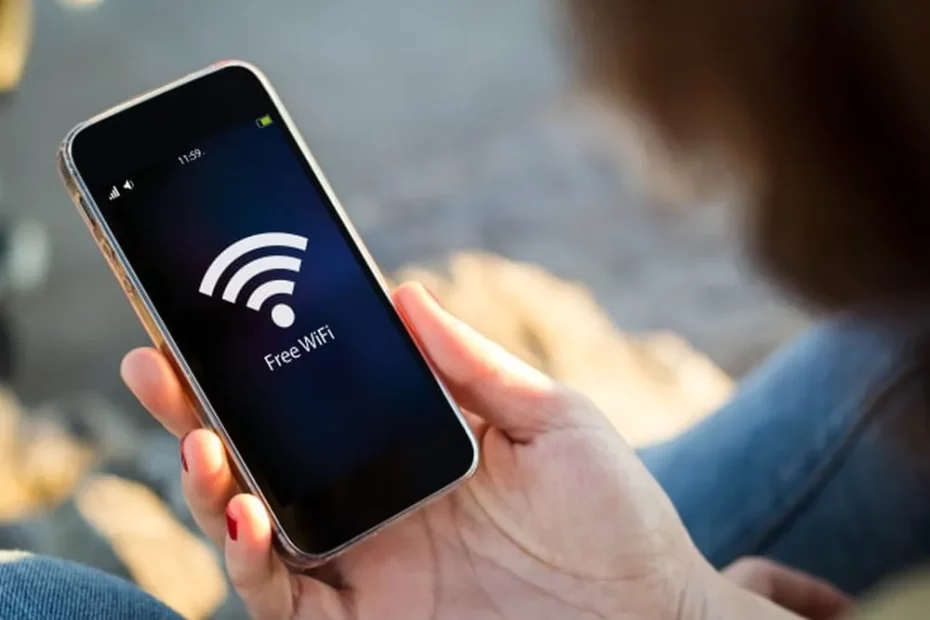In the digital age, where connectivity is an essential component of our daily lives, the search for free and unblocked Wi-Fi networks has become a pressing need. Among the various options available for the iOS and Android operating systems, two notable applications stand out: Zona Franca and Instabridge.
Adverts
Free Zone: Discovering Unblocked Networks
Free Zone appears as a tool dedicated to identifying unblocked Wi-Fi networks in the user's proximity. Its simplified interface and easy navigation make it an affordable choice for those looking for a straightforward and efficient solution.
When activated, the application performs a thorough scan of available networks, highlighting those that do not require a password for access. Its simplicity of use is a strong point, making it accessible even for less experienced users.
However, the effectiveness of the Free Zone depends significantly on population density, as unblocked networks are scarcer in less populated areas.
How to Use Free Zone:
The process of using Free Zone is intuitive. After installation, the user is presented with a user-friendly interface displaying the available networks. Just select the desired option, and the application automatically connects. However, it is worth noting that the improper use of these networks may violate security and ethical policies.
Instabridge: Information and Connectivity at Your Fingertips
Instabridge, in turn, stands out for offering detailed information about nearby Wi-Fi networks. Available for both Android and iOS operating systems, the app aims to provide users with a comprehensive view of the connectivity landscape around them.
Its community-powered database offers insights into the quality of connections, transmission speed and, when available, the need for passwords. This collaborative approach adds a social component to searching for Wi-Fi networks, allowing users to share their experiences and contribute to the community.
How to Use Instabridge:
Instabridge's interface is equally user-friendly, allowing users to view details about nearby networks and make informed decisions.
The application facilitates direct connection to unlocked networks and simplifies the process of entering passwords when necessary. However, the accuracy of the information depends on the active participation of the community, and may vary in less populated areas.
Important Questions to Consider:
When evaluating the usefulness of these applications, it is crucial to consider not only the ease of use, but also the ethical and legal implications involved. Unauthorized access to Wi-Fi networks may violate security policies and local laws, resulting in serious consequences for the user.
Furthermore, it is essential to understand that searching for unblocked networks does not replace the need for robust security measures, such as using VPNs to protect privacy when browsing on public networks.
Ethical Challenges and Legal Considerations:
The relentless search for unblocked Wi-Fi networks raises ethical and legal questions that cannot be ignored. Applications such as Zona Franca and Instabridge, although they provide practical solutions, can also encourage practices that violate the privacy and security of others.
It is essential that users understand the sensitive nature of accessing Wi-Fi networks and are aware that misuse may result in legal consequences.
Hacking into private networks is, in many cases, a direct violation of the law, and the spread of applications that facilitate such a practice raises serious concerns about the liability of developers and users.
Wi-Fi Coverage Extension:
A recurring question among users is how to extend Wi-Fi coverage in home environments. While the reviewed applications can assist in identifying nearby networks, it is imperative to address expanding coverage in private contexts.
Solutions such as signal repeaters, mesh networks and router location optimization are crucial aspects to consider to ensure effective Wi-Fi coverage in home environments. Extending the network in a planned manner is essential to avoid gaps in connectivity and provide a consistent internet experience throughout the home.
VPN: A Safeguard for Privacy in the Digital Age:
When exploring connectivity on public networks, security and privacy cannot be neglected. Using VPNs (Virtual Private Networks) becomes a crucial consideration for protecting personal data and online communication.
Incorporating a VPN into your browsing routine on public networks not only protects against potential security threats, but also prevents unwanted monitoring by third parties. Cybersecurity is a priority, and the tools to protect online privacy are within everyone's reach.
The Future of Connectivity: Responsibility and Innovation:
As we move into an increasingly interconnected era, it is vital that the search for connectivity solutions is accompanied by an ethical conscience. Technological innovation must be guided by values that respect privacy, security and digital rights.
The challenge lies in balancing accessibility with responsibility, ensuring that connectivity does not compromise the integrity of the digital environment. Apps like Zona Franca and Instabridge are just one facet of this quest for connectivity, and the user community plays a significant role in shaping the course of this evolution.
Conclusion: Responsible Connectivity
In a world where connectivity is essential, apps like Zona Franca and Instabridge offer solutions for those looking for affordable Wi-Fi networks. However, it is imperative to highlight the importance of responsibility when using these tools, respecting the ethical and legal standards that govern internet access.
Connectivity must not compromise security and privacy. When seeking unblocked networks, it is vital to be aware of the associated implications and adopt responsible practices. The future of connectivity depends not only on the technology, but also on the ethical behavior of the users who use it.



